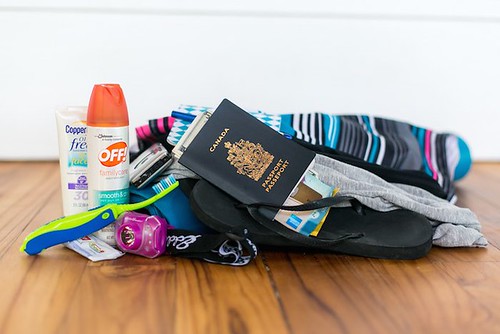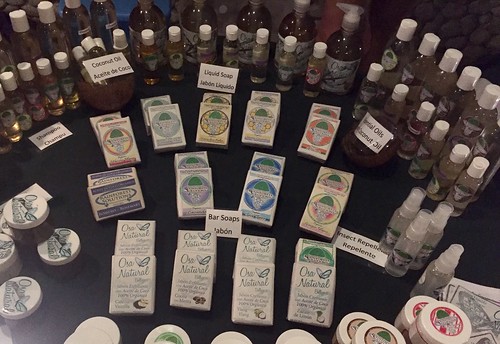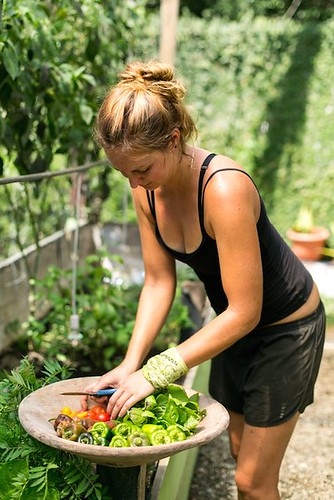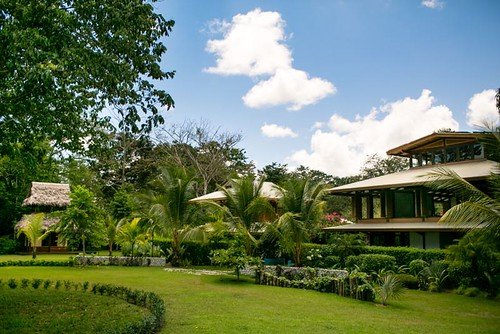Packing for a new place is always a bit of a guessing game and it can sometimes be harder to pick the things to leave at home compared to picking what you want to bring.
We’ve told you what you should pack when you come to Blue Osa, and what to bring to our 30-day yoga teacher training, but what about things to leave at home?
You’ll inevitably have at least a few things in your suitcase that you don’t even touch (can someone tell me why I brought a sequined Kate Spade dress to the middle of the jungle?). Having more than you need might sound better than having less, but there is something to be said for the practice of minimalist packing.
Not only will it lighten your load, making it easier for you to get around and decreasing stress levels while you’re traveling, having minimal possessions while you’re here at Blue Osa allows you to take your energy away from your material belongings and focus on your own spiritual journey. The practice of minimalism can be a very fulfilling one, and what better time to start then now?
So, to get you started on packing less to bring more presence of mind, here are five things to leave at home.

1. Jeans
You’re coming to the rainforest of Costa Rica – it’s hot, and it’s HUMID.
Trust me, you will not need or use your jeans. After your first experience wearing them around in the heat until they’re practically glued to your thighs and then trying to peel them off your skin at the end of the day, you might even just throw them in the trash.
Stick with lightweight, breathable clothing that’s easy to move (and sweat) in. Luckily, those things weigh less and take up less space anyway!
2. Makeup and hair products
Some of you might have a few essentials that you like to have on hand for your skin or hair, but for the most part, leave the big cosmetics bag at home.
Not only will it be freeing to walk around au natural your whole vacation, but if you try to do up your face and hair, it will likely fall apart the second you go outside anyway. You’ll probably sweat a lot of your makeup off, and the rain and humidity will immediately reverse any hair straightening or super-strength hairspray.
If you feel like you need something, I do bring a few light products. A nice tinted moisturizer is good for days when you want something on your skin, but light enough that it looks and feels like nothing (having cakey products on your face in this weather is not pleasant). I bring a mascara wand for the occasional fancy night, but could certainly do without it. I don’t put anything in my hair, but some people use coconut oil or sea salt spray for maintenance. Nothing more!
Plus, if you forget anything, we sell Osa Natural products at our store – handmade with local ingredients.

3. Excessive travel gear and gadgets
Before I left to come to Costa Rica for the first time, my well-intentioned aunt, who loves the outdoors and camping, took me to her favorite place on earth: REI.
I’m not sure where she thought I was going, but she ransacked the aisles of the recreational equipment department store, filling her cart with every travel gadget and camping gear item she could find. Mosquito nets, freeze-dried food, a water purifying straw, a packable sleeping bag…when she reached for the portable toilet, I had to stop her.
You aren’t going to use all those fancy travel gadgets, trust me. You have what you need here –the water is purer than some bottled water, the beds come with mosquito nets, and the food from our farm and garden is abundant.

4. Excessive electronics
As a writer, my laptop is indispensable to me. I bring it everywhere. However, if you don’t think you’ll need yours, don’t bring it! With faulty internet and wet living conditions, it’s probably safer at home anyway.
I love to read and try to pack light, so I forgo books for my Kindle eReader as well.
[et_bloom_inline optin_id=”optin_16″]I don’t bring much else in the way of electronics. No GoPros and fancy cameras, no tablets, no fitbits and external chargers.
Bring only what you think will truly enhance your experience. If you’re a passionate photographer, maybe you do really need your big SLR. But err on the side of less is more, especially when it comes to electronics. The digital detox is one of the best parts of a Costa Rican retreat!
5. Anything valuable that can’t get wet
You may be noticing a pattern here – it’s pretty wet in Costa Rica. It is the rainforest, after all.
If you keep your belongings safely stored in your room, they’re not going to get poured on. But they will still get a little damp from time to time, because heavy rains bring lots of humidity and moist air. While this has never caused permanent damage to any of my belongings, you’ll want to leave anything at home that can’t be exposed to a little dampness. Bringing valuables, in general, is not advised unless you really, really need them.
Living minimally will teach you that there are tons of “essentials” you think you need that you really don’t. In fact, according to many of us here at Blue Osa, you don’t even need underwear!
About The Author
 Elizabeth Aldrich is a lifelong traveler and freelance writer specializing in arts and entertainment, travel and lifestyle, and finance and business writing. She’s written for outlets as varied as Rawckus Music & Arts Magazine, Credit Karma, Sweden Tips, and Engadget. Elizabeth has a knack (read: obsession) for finding the best deals, travel hacks, and hidden gems everywhere she goes, which she blogs about at Temporary Provisions. You can find her playing the urban romantic in NYC, downing Stumptown coffee in her hometown of Portland, OR, or retreating from the madness in the rain forests of Costa Rica. To see more of her work, visit her at www.elizabethaldrich.com.
Elizabeth Aldrich is a lifelong traveler and freelance writer specializing in arts and entertainment, travel and lifestyle, and finance and business writing. She’s written for outlets as varied as Rawckus Music & Arts Magazine, Credit Karma, Sweden Tips, and Engadget. Elizabeth has a knack (read: obsession) for finding the best deals, travel hacks, and hidden gems everywhere she goes, which she blogs about at Temporary Provisions. You can find her playing the urban romantic in NYC, downing Stumptown coffee in her hometown of Portland, OR, or retreating from the madness in the rain forests of Costa Rica. To see more of her work, visit her at www.elizabethaldrich.com.







